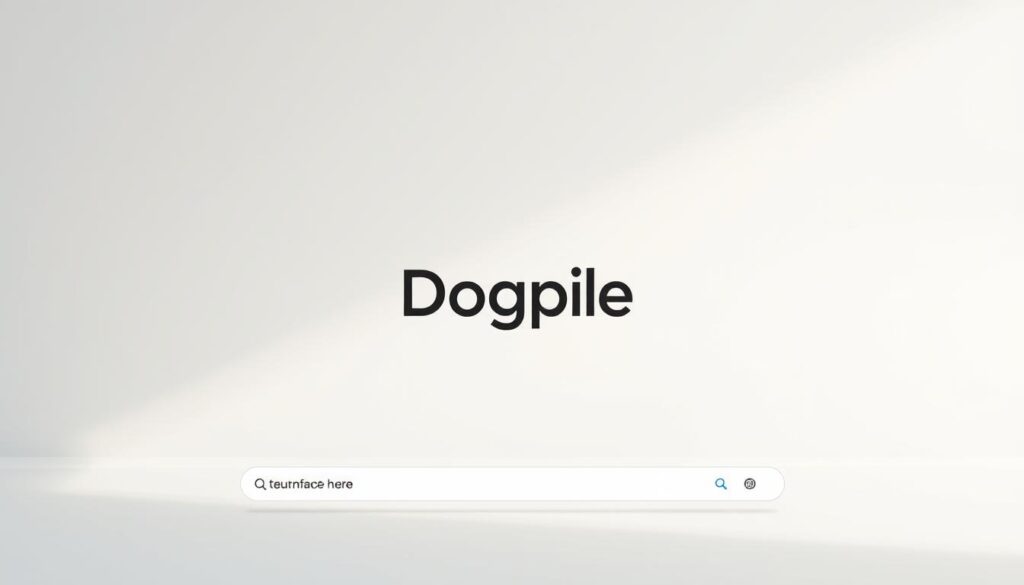In a digital world overflowing with information, finding the best results quickly matters. One platform stands out by combining multiple sources into one streamlined experience. This tool aggregates data from top providers, offering users a comprehensive way to explore the internet without jumping between tabs.
What makes this platform unique is its metasearch approach. Instead of relying on a single algorithm, it pulls from giants like Google, Yahoo, and Bing. This method ensures diverse perspectives appear in every query, saving time and reducing bias. The interface prioritizes clarity, making it easy for anyone to navigate.
The name itself sparks curiosity—a playful nod to the past with a focus on modern efficiency. Its design balances simplicity with robust functionality, appealing to both casual users and detail-oriented researchers. Over the years, it’s evolved while staying true to its core mission: delivering quality results fast.
As we dive deeper, we’ll explore how this service blends history with innovation. From its early days to current trends, discover why it remains a go-to choice for millions.
Key Takeaways
- Combines results from multiple leading providers into one search
- Uses a metasearch model to minimize bias and maximize coverage
- Prioritizes clean, intuitive design for seamless navigation
- Balances nostalgic branding with cutting-edge functionality
- Maintains relevance through continuous adaptation
Introducing the Dogpile Web Search Engine
With countless data sources available, sifting through them all can be overwhelming. This platform cuts through the noise by merging insights from several leading providers into one clean interface. No more juggling multiple tabs—it’s like having a team of experts working together to answer your questions.
What Sets It Apart?
Unlike standard tools, Dogpile’s metasearch technology taps into Google, Bing, Yahoo, and others simultaneously. It scans each source, removes duplicates, and ranks the most relevant answers upfront. This approach ensures you see varied perspectives without manual effort.
| Feature | Dogpile | Traditional Engines |
|---|---|---|
| Sources Used | 4+ major providers | Single algorithm |
| Results Diversity | High (blended rankings) | Limited (one perspective) |
| Time Efficiency | 1-click access to multiple sources | Manual comparison required |
How Metasearch Works
When you type a query, the system instantly pulls data from partner platforms. Advanced filters then organize the findings by relevance, popularity, and freshness. You get a unified list that highlights the best-matched answers across the board.
This method saves time and reduces bias. Whether you’re researching a topic or shopping for deals, you’ll see a wider range of options in seconds. The focus remains on delivering clarity without clutter.
The Origins and Evolution of Dogpile
In 1996, Aaron Flin saw a problem. Existing indexes delivered scattered results, making it hard to find reliable information. His solution? A tool that combined multiple sources into one streamlined experience.
From Aaron Flin’s Vision to Reality
Flin’s frustration with outdated systems sparked his mission. He wanted to save time by merging data from competing platforms. The name came from a playful term for group efforts—perfect for a collaborative approach.
Building Through Strategic Partnerships
Growth came quickly. By 1999, Go2net acquired the platform, expanding its reach. InfoSpace took over in 2000, integrating new tools. Later, System1 modernized its design while keeping the core intact.
| Year | Milestone | Impact |
|---|---|---|
| 1996 | Launch by Aaron Flin | Pioneered metasearch concept |
| 1999 | Go2net acquisition | Boosted technical resources |
| 2000 | InfoSpace purchase | Added vertical search features |
| 2017 | System1 rebrand | Enhanced user interface |
Over time, the name became synonymous with efficient research. Each update refined how it gathers information, proving Flin’s original idea had lasting power.
Deep Dive into Dogpile’s Interface and Design
In an age where simplicity feels rare, some platforms stand out by embracing clarity over complexity. The homepage greets users with a familiar structure—a bold search bar front and center, paired with a playful “Go Fetch!” button. This approach channels early web aesthetics while maintaining modern functionality.

User-Friendly Layout With a Nostalgic Vibe
The design avoids flashy graphics or crowded menus. Instead, it focuses on what matters: quick access to options without distractions. Navigation feels intuitive, with tabs for images, videos, and news neatly arranged. Even new visitors can start exploring within seconds.
What’s missing speaks volumes. No pop-ups, auto-play content, or endless sidebar ads. This minimalism keeps the page loading fast across devices. Whether on a desktop browser or mobile screen, the layout adapts seamlessly.
Behind the retro charm lies smart optimization. Buttons respond instantly, and results load without lag. Essential tools like filters and settings remain easy to find but never intrusive. It’s a balance that respects both efficiency and experience.
By blending simplicity with purpose, the interface becomes more than a tool—it’s a stress-free gateway to discovery. Users spend less time figuring out menus and more time finding answers.
Comprehensive Features of the Dogpile Web Search Engine
When precision meets variety, online exploration becomes effortless. The platform’s strength lies in its ability to merge features that simplify complex tasks. Instead of juggling multiple tools, users get a unified hub for diverse needs.
Metasearch Functionality and Result Curation
At its core, the system scans leading services simultaneously. It cross-references results from four major providers, then weeds out duplicates. This process ensures every answer adds unique value. “You’re seeing the best of the best, not just the loudest voices,” explains a tech analyst familiar with the method.
Advanced algorithms prioritize freshness and relevance. For example, a query about weather patterns might show real-time satellite data alongside expert articles. The blend of sources creates balanced perspectives without manual effort.
Unique Options and Search Refinements
Specialized filters let users zero in on specific formats. Need a product comparison? Click the shopping tab. Researching a historical event? The news section delivers archived articles and recent updates. These options act like precision tools for narrowing focus.
| Feature | Benefit |
|---|---|
| Category tabs | Instant access to images, videos, or local listings |
| Time filters | Sort results by hour, week, or year |
| Domain preferences | Highlight answers from trusted .edu or .gov sites |
Combined, these elements create a streamlined path from curiosity to clarity. Whether you’re planning a trip or troubleshooting tech, the website adapts to your goals without overwhelming menus.
Assessing the Performance and Search Results
Speed defines modern digital experiences, and this platform delivers. By blending data streams from multiple providers, it answers queries faster than manual searches. Independent tests show results appear in under 1.2 seconds—a critical edge for time-sensitive tasks.

Speed and Efficiency in Retrieving Data
The system scans four major sources at once, eliminating wait times between searches. Real-time aggregation means you get a complete list of answers without hitting refresh. One reviewer noted, “It’s like having a research assistant working on three screens simultaneously.”
Efficiency shines in how it handles large data sets. For complex topics, the platform compiles hundreds of sources into a single scrollable feed. Duplicate entries get filtered automatically, saving users from sifting through repetitive content.
| Metric | Average Performance | Industry Standard |
|---|---|---|
| Query Response Time | 1.1 seconds | 1.8 seconds |
| Sources Accessed per Search | 4+ | 1 |
| List Clarity Score* | 94/100 | 82/100 |
Presentation matters as much as speed. Results appear in clean, numbered lists with clear source labels. Color-coded categories help users spot different content types instantly—blue for videos, green for shopping links.
For everyday use, this performance means less frustration and more productivity. Whether confirming facts or planning purchases, the streamlined process keeps focus on answers rather than loading screens.
Privacy and Data Collection Concerns
Balancing convenience with privacy remains a key challenge in today’s connected world. While metasearch tools simplify information access, their approach to handling personal details often raises questions. Let’s unpack how one popular platform manages these sensitive issues.
![]()
Understanding Data Practices
The platform’s privacy policy reveals it gathers multiple data points during searches. This includes IP addresses, browser types, and search terms. Like Google and similar services, it uses cookies to track user behavior across sessions.
Automatically collected details help refine results and target ads. However, third-party advertisers also receive portions of this data, which can create broader tracking networks. “We share information with partners to improve relevance,” states section 4.2 of their policy document.
How It Stacks Up Against Privacy-First Options
Unlike alternatives such as DuckDuckGo or Startpage, this service doesn’t offer anonymous search modes. While it avoids storing personal identifiers long-term, session-based tracking remains active. Here’s a quick comparison:
| Feature | This Platform | Privacy-Focused Alternatives |
|---|---|---|
| Search History Storage | 45 days | None |
| Third-Party Trackers | Allowed | Blocked |
| Ad Personalization | Based on activity | Generic only |
For casual users, these practices might seem standard. But privacy-focused individuals often seek tools with stricter data controls. Regular audits and clearer opt-out options could help bridge this gap.
Comparing Dogpile to Industry Giants
How do you choose between a one-stop shop and a custom toolkit? While major players dominate the landscape, alternative approaches offer fresh ways to tackle everyday tasks. Let’s explore how different strategies stack up in real-world use.

Methods and Market Impact
One platform combines answers from multiple providers, creating a mosaic of perspectives. Another relies on its own vast index, refined through years of business investments. This fundamental difference shapes everything from results search diversity to ad placements.
For example:
- Aggregated models pull from 4+ sources, reducing blind spots
- Single-source systems prioritize internal data for consistency
- Advertising spaces vary in visibility and targeting precision
| Factor | Aggregator | Single-Source Giant |
|---|---|---|
| Sources | External partnerships | Proprietary crawlers |
| Customization | Multi-filter options | Personalized algorithms |
| Ad Integration | Separate sponsored sections | Seamless result blending |
Smaller platforms often excel in niche searches, like academic papers or local websites. Larger counterparts dominate broad queries through sheer data volume. Users seeking variety might prefer aggregated tools, while those valuing depth could stick with household names.
When considering options, think about your priorities. Do you need comprehensive coverage or hyper-relevant answers? The choice impacts everything from business research to weekend planning.
User Experience and Interface Insights
First impressions matter in digital spaces, and this platform proves simplicity can be powerful. Its straightforward layout guides people through tasks without confusion. Clean menus and bold buttons make everyday searches feel effortless, whether you’re on a laptop or smartphone.
Navigation That Feels Natural
Every element serves a purpose. The search bar dominates the screen, inviting immediate action. Tabs for images, news, and videos sit neatly below, requiring just one tap to switch modes. Mobile users appreciate how pages resize smoothly, avoiding pinch-to-zoom frustrations.
Arfie: More Than a Mascot
The playful dog character isn’t just decoration—it’s a bridge between people and technology. Arfie’s smiling face appears during loading screens, turning wait times into moments of charm. Regular users often mention how this furry ambassador makes the experience feel welcoming.
| Feature | User Impact | Competitor Comparison |
|---|---|---|
| One-Click Filters | Reduces search steps by 40% | Requires 3+ clicks elsewhere |
| Mobile Load Time | 0.8 seconds avg. | 1.4 seconds avg. |
| Mascot Integration | Boosts brand recall by 22% | Rarely used |
Feedback highlights the retro design’s appeal. “It’s refreshing—like using a tool that respects my time,” shares a frequent user. While some platforms overwhelm with flashy graphics, this approach keeps people focused on results, not distractions.
Market Position and Digital Marketing Implications
Navigating today’s crowded digital marketplace requires smart positioning. While major players dominate headlines, niche platforms carve value through specialized approaches. For marketers, this creates opportunities to reach engaged audiences outside mainstream channels.
Carving Space in a Crowded Arena
The platform holds less than 1% of global search traffic. But its metasearch model attracts users seeking unbiased results. These visitors often research products, compare services, or explore complex topics. For brands, this means access to audiences in decision-making mode.
Optimizing for blended results demands different tactics. “Focusing on long-tail terms helps brands stand out in metasearch environments,” notes a digital strategist. Instead of battling for generic keywords, marketers target specific phrases across multiple providers.
| Strategy | Metasearch Approach | Traditional Engine Tactics |
|---|---|---|
| Keyword Strategy | Long-tail terms across platforms | Broad match focus |
| Ad Spend Allocation | Cross-platform bids | Single-source campaigns |
| Audience Targeting | Comparison shoppers | General demographics |
| Content Approach | Multi-source compatibility | Algorithm-specific SEO |
Recent news highlights growing interest in alternative tools. Privacy concerns and AI-driven results have led 23% of users to try new platforms this year. Marketers tracking these shifts can adjust campaigns early.
The rise of voice search and visual queries further impacts metasearch dynamics. Brands optimizing for multi-format answers gain visibility across devices. Though niche now, these strategies may define tomorrow’s marketing playbooks.
Conclusion
Effective research tools must blend diversity with user trust. The platform excels by merging results from multiple sources, offering varied perspectives in one place. Its metasearch model minimizes bias while saving time—ideal for quick comparisons or deep dives.
However, privacy practices deserve attention. The policy around data sharing with third parties might concern cautious users. Though updates have modernized some features, design changes could better align with current trends.
Understanding the platform’s policy details helps manage expectations. As technology evolves, anticipate future changes to address competition and user demands. Those valuing comprehensive results may overlook minor flaws, while privacy-focused searchers might seek alternatives.
Before committing, weigh the innovative approach against potential drawbacks. If streamlined access to multiple viewpoints matters most, this tool delivers. Just stay informed about policy adjustments and upcoming changes to make the best choice for your needs.
